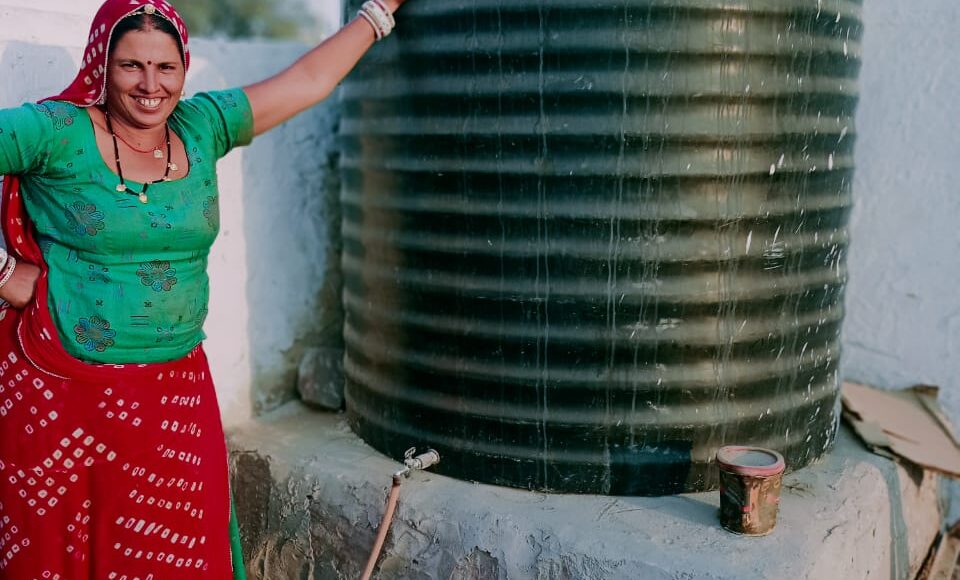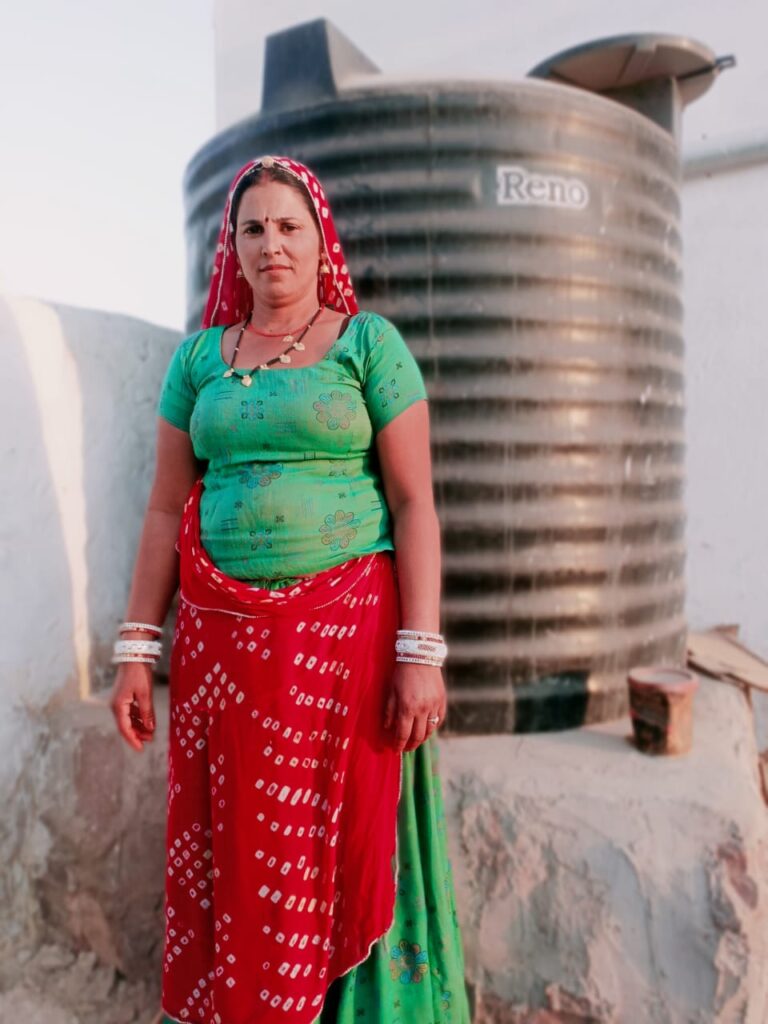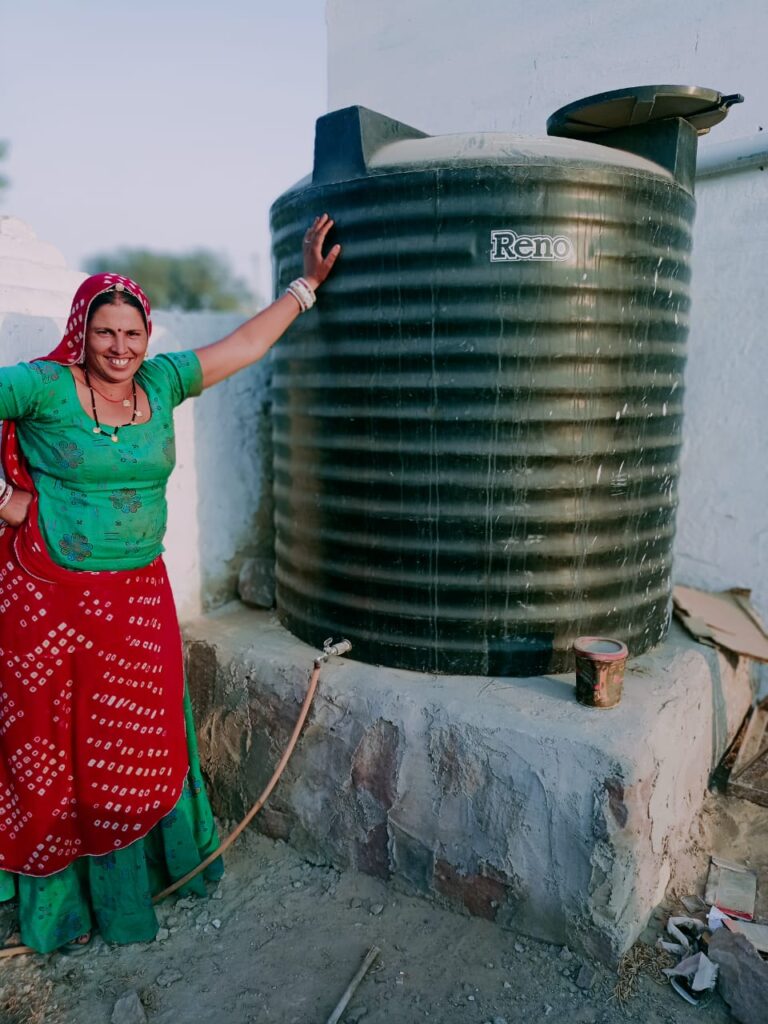
Record Heat in India: How a Water Conservation Solution Helps Farming Families
Northern and central India have been experiencing record-breaking heat. In late May, temperatures near Delhi reached over 110 degrees Fahrenheit. Learn how farmers like Manhori Devi are adopting practical solutions to adapt to a changing climate.
A scorching heat wave has been gripping parts of northern and central India, with temperatures soaring well above 110 degrees Fahrenheit in many cities. The record heat in India has posed severe risks to vulnerable populations, strained energy grids, and damaged crops.
Experts attribute the intense heat to a lingering atmospheric circulation pattern and the effects of climate change, increasing the frequency and intensity of such extreme heat events in the region. With large stretches of the country experiencing drought-like conditions, authorities have warned that the heat wave could continue into June, putting further strain on water resources.
India’s Heat Wave: Challenges and Solutions for Farmers
Water conservation is essential in India’s Rajasthan region, where some places experience less than five inches of annual rainfall.
In this arid region, some of which is part of the Thar desert, farmers battle intensifying heat and water scarcity to grow crops to support their families. With climate change, this warm and dry weather is only getting worse. The lack of rainfall and the high evaporation rates pose significant challenges to agriculture in this region, making water conservation during the rainy season crucial.
TechnoServe works with farmers in this area to grow guar, a drought-resistant legume that can be sold for various commercial purposes. Farmers learn regenerative agricultural techniques that help improve their resilience to unpredictable or unfavorable climatic conditions. Thus far, thousands of farmers have applied these techniques to grow more and better harvests of guar and sell them to reliable buyers like Solvay.
In addition to improving farmer harvests, TechnoServe also helps women in these farming communities earn an independent income. Like many ways of earning income in this area, success often depends on water conservation.

A Farmer and Businesswoman Confronts Challenges
Manhori Devi is one of the women working tirelessly to earn a reliable income in this area. In addition to farming guar, she runs a small shop selling various household goods. Every morning, she wakes up and completes her daily chores before spending four to six hours serving customers in her shop.
She then tends to her “kitchen garden.” TechnoServe supports farmers in developing these small plots of land, enabling them to cultivate vegetables and other healthy crops to feed their families. This garden saves Manhori’s family money on food purchases and improves her family’s overall nutrition.
Like many farmers, Manhori struggled to irrigate her garden and access a consistent water supply for her family. She had to rely on irregular rainfall and long walks to a distant water source. She soon realized she would need to find new ways to conserve water, particularly to deal with heatwaves.
Practical Solutions for Water Conservation
Manhori learned improved agricultural techniques from the TechnoServe training, which made her more confident about making decisions related to farming and household issues.
So, she discussed her water conservation problem with the TechnoServe team—and discovered a unique solution. A “rooftop rainwater harvesting system,” or RRHS, offered a simple, cost-effective way to collect and store water close to home. During the rainy season, this system would collect the rain that fell on the roof of her house and channel it into a water tank, conserving water for use during periods of drought with little effort on her part.
Manhori was sold. She committed to maintaining the RRHS and contributed funding towards its installation. Soon, a long pipe was running from her rooftop, channeling any rain on the roof into a water tank below.

“Now I Don’t Need to Walk a Long Distance”
The impact of this water conservation soon flowed into all aspects of Manhori’s life.
“The availability of rainwater at all times allows us to water our kitchen gardens properly, giving us good quality, nutritious fruits and vegetables all year long,” she said. The system also provides drinking water for her family and their livestock. And she has even been able to share the water—and her increased vegetable harvest—with her neighbors.
Moreover, the water conservation system saves Manhori time and energy. “Now, I don’t need to walk a long distance for water collection,” she shared. “Through the RRHS, I can grow more vegetables and spend more time in my shop.” This way, she can focus more on improving her sales and business income.
Ultimately, Manhori sees the RRHS as an opportunity to improve her wider community. She previously helped train her fellow farmers on regenerative agricultural techniques that could improve their yields and incomes.
Today, she is also encouraging her neighbors to adopt a new improvement in their lives: a rooftop rainwater harvesting system.
For farmers like Manhori, the ability to conserve water during the rainy season to use during heatwaves and droughts has been transformative.
RELATED CONTENT:





